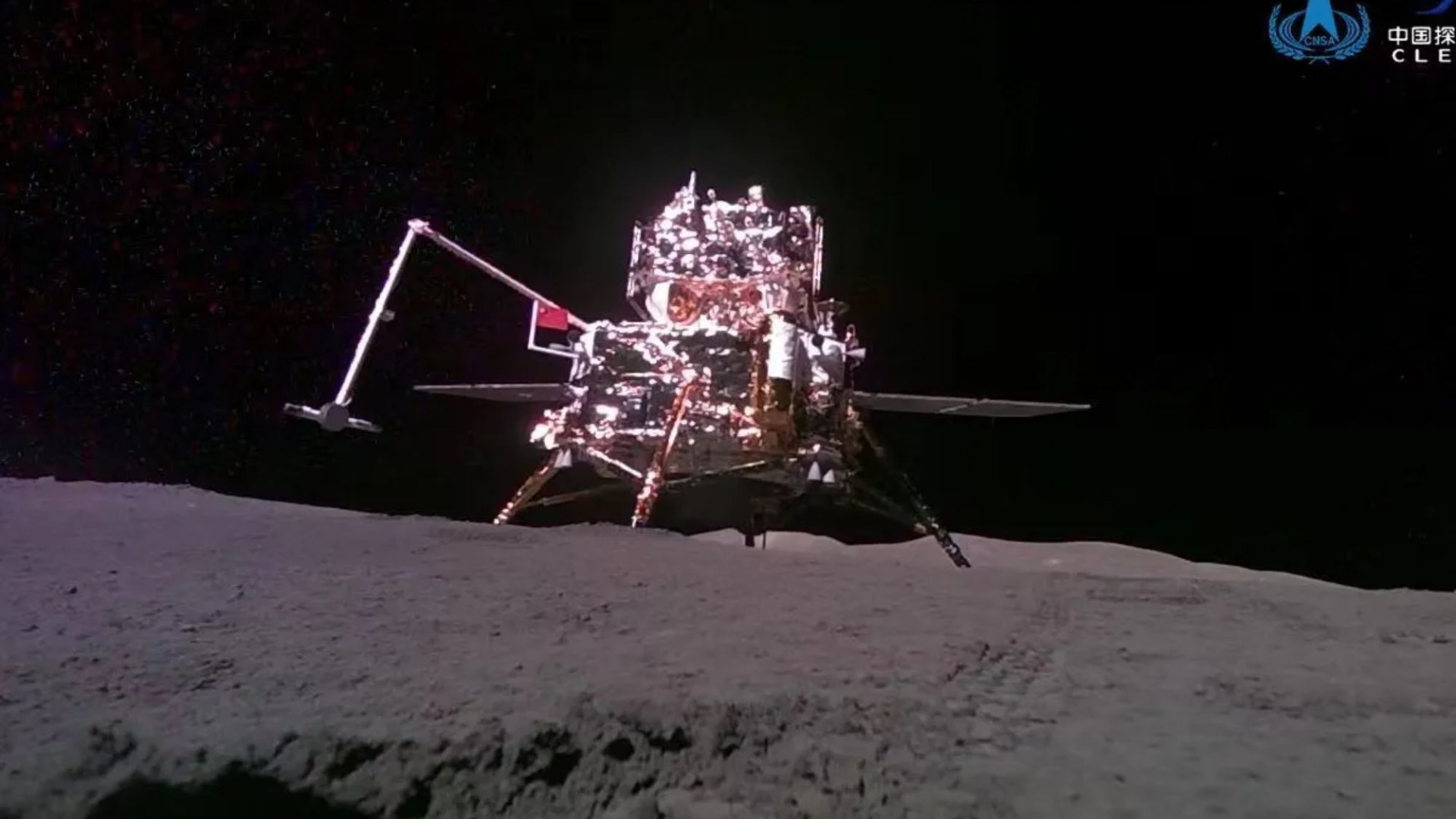
CHINA’s space agency has officially declared that the US is a competitor on the moon for the very first time.
The China National Space Administration’s shock decision comes after they fiercely stated they’d never compete with the US.
3

3
The CNSA said: “It is foreseeable that in the next 20 to 30 years, China’s International Lunar Research Station and the US Artemis programme will compete.”
Their new lunar plan read: “[We] will compete in terms of technology and operational efficiency on the same historical stage and at the same geographical location (the south pole of the moon).”
It continued: “In the historical context of that period, the race to demonstrate superior political strength made lunar exploration unsustainable,
The plan, titled the “Strategic Concept of Resource Utilisation Development Route of the International Lunar Research Station”, was unveiled in April.
It was written under mission scientist Pei Zhaoyu’s leadership.
Prof. Pei told The South China Morning Post: “The utilisation of lunar resources will become the focus of the competition.”
He added: “And countries such as the United States do not have a distinct edge in this.”
The decision marks China’s shift from a secretive to more open space policy – but Washington has always seen the CNSA as a rival.
NASA’s big boss Bill Nelson admitted to Politico last year: “It is a fact: we’re in a space race.
“And it is true that we’d better watch out that they don’t get to a place on the moon under the guise of scientific research.
“It is not beyond the realm of possibility that they say, ‘Keep out, we’re here, this is our territory.'”
In fact, China successfully launched its Chang’e-6 spacecraft as part of its mission to retrieve new samples from the Moon on May 3.
And the monumental moment China’s space probe landed on Earth carrying the first ever sample from the dark side of the moon was captured on camera.
China’s Chang’e-6 probe has landed safely containing untouched rock and soil – a mission no other nation has successfully completed.
Extraordinary footage shows the small, unassuming sack attached to a parachute as it descends to grassy Earth containing the first sample of the moon’s “dark side”.
The probe landed in northern China in the Inner Mongolian region.
Earlier this month the Chang’e-6 robot landed on the dark -183C side of the moon before successfully retrieving rock and soil samples in what is a world-first.
The satellite touched on the lunar far side after descending from its orbit of around 124 miles above the moon’s surface to find a landing site.
During what has been dubbed the “Space Race of the 1960’s”, the US and Russia took part in a race to see who could achieve more in space.
The two nations, Russia then being the USSR were also involved in the Cold War.
The US felt they could assert dominance if they were the first to send a man on the moon.
It saw Americans and Soviets compete to prove their technological expertise.

3
Why is the Chang’e 6 robot mission so important?
THE far side of the moon, dubbed the ‘dark side’, has now become the focal point of numerous space exploration programs.
India, Russia, China and the US have all been engaged in space developments to study the far point of the moon.
It is deemed to be not only a compelling place for future space explorations but also a suitable site for lunar outposts.
Scientists believe it could be the most promising location for water-based ice, which will be key to future human habitation on the Moon.
It is also one of the moon’s most resource-dense areas.The permanently shadowed places on the Moon could contain ice and other minerals, which would be vital resources for future explorers.
Scientists reckon there is an abundance of Helium-3 in so-called ‘cold traps’ littered across the south pole, which can help produce huge amounts of energy here on Earth.
The mountain peaks near the pole – which are illuminated for longer periods – could be used to provide solar energy to an outpost.
With an outpost on the Moon, scientists will be able to analyse water and other volatile samples dating to the formation of the Solar System.
For China, the landing of the Chang’e-6 lunar probe is an important milestone that the country will leverage to expand its space presence on the far side of the moon.
It will use the data collected by the space lander to allow Chinese astronauts to set foot on the moon by 2030